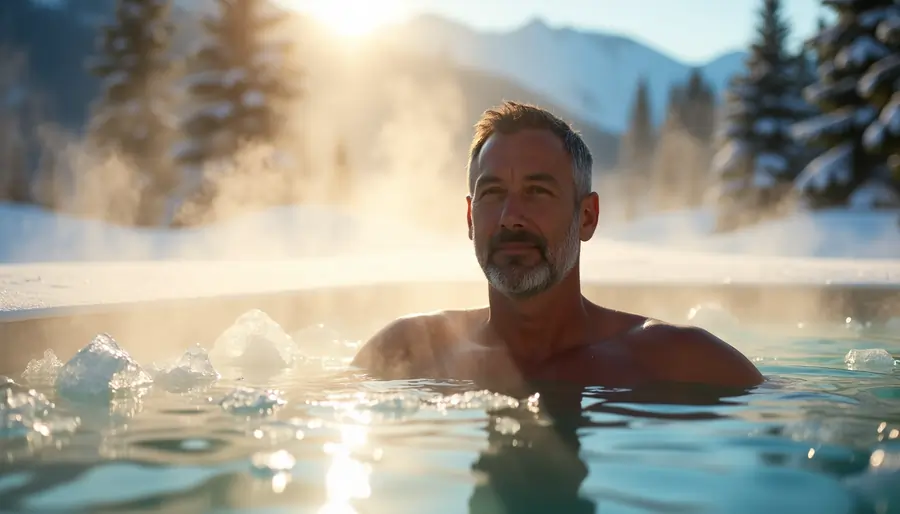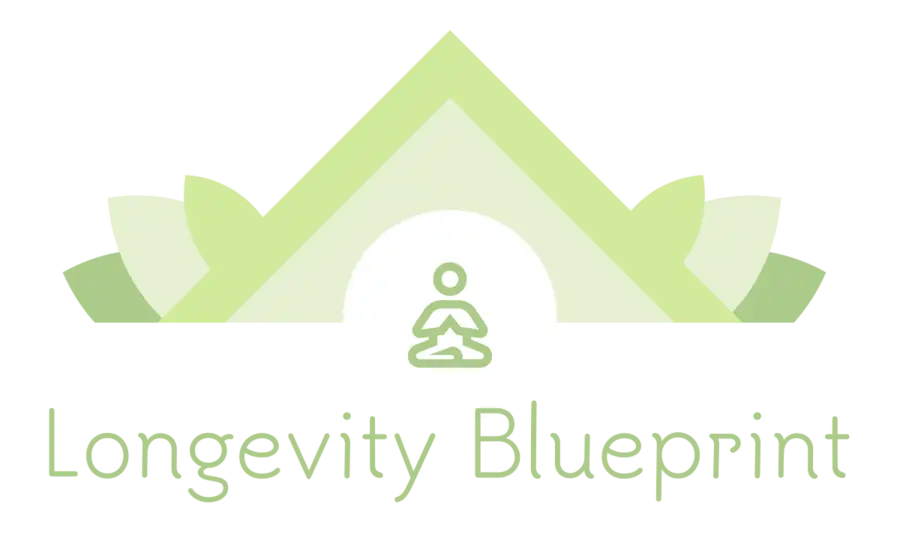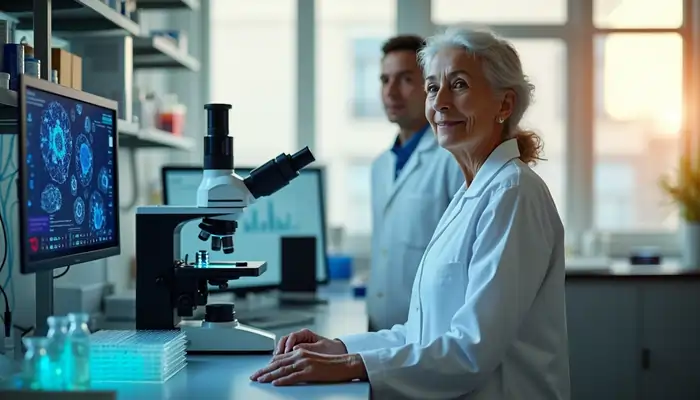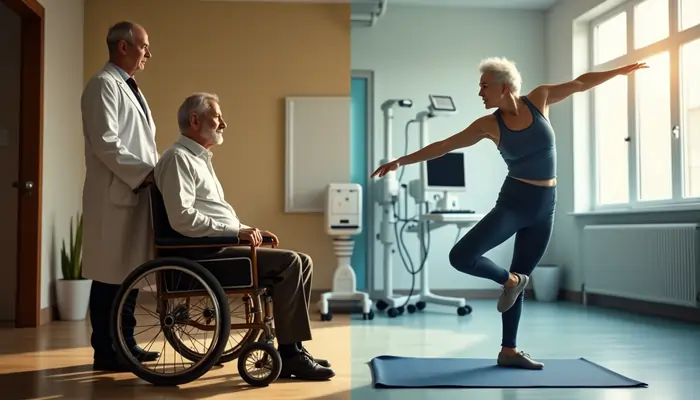Cold Therapy Science: The Hidden Biology Behind Living Longer

The World Health Organization projects our global senior population will double from 1 billion to 2.1 billion between 2019 and 2050. This fundamental change in demographics has led scientists to explore cold therapy as a promising way to extend our health and lifespan.
The science behind cold temperature therapy shows remarkable results. Research reveals that exposure to extreme cold can boost your metabolic activity by up to 350%. Whole-body cryotherapy sessions at temperatures between -110°C to -160°C last just 1-3 minutes but boost your body’s antioxidant capacity by a lot. These sessions also activate important longevity genes called sirtuins. The benefits of cryotherapy go beyond temporary effects and create deep biological changes. These changes reduce inflammation, enhance insulin sensitivity, and trigger the release of mood-boosting endorphins.
This piece will get into the fascinating biological mechanisms that make cold exposure work and what it means for human longevity. Current scientific research shows how this powerful environmental stimulus affects everything from our cellular cleanup processes to our brain function.
How Cold Exposure Triggers Cellular Resilience
The human body starts an amazing cascade of cellular adaptations at the time it encounters cold temperatures. These biological responses help us survive immediate stress and might extend our lifespan by deepening our commitment to cellular strength. Studies show that cold exposure boosts autophagic function by a lot. This protective mechanism lets cells handle stress better [1].
The Hormetic Stress Response Explained
Hormesis explains how cold exposure works – it’s a biological principle where mild stress triggers beneficial adaptive responses. The old saying “what doesn’t kill us makes us stronger” proves true at the cellular level. Toxic stress speeds up biological aging, while hormetic stress can slow aging processes. This happens because of the beneficial actions during stress recovery [2].
Hormetic stressors like cold exposure act as short, moderate intensity stress bursts that build stress resilience. Your cells and tissues recover quickly and might even rejuvenate [2]. The body’s response to cold works like a cellular workout that reinforces itself, which leads to better cellular resilience [3].
Scientists found that daily cold water immersion for a week teaches the body to manage cellular stress better. People showed fewer signs of cellular damage [4]. The research suggests that proper cold exposure might prevent diseases and slow down aging at the cellular level [1].
Mitochondrial Biogenesis: Creating Cellular Power Plants
Cold exposure reshapes our mitochondria – our cells’ powerhouses. These cellular components change their shape and function at the time of cold stimulation to meet the energy needs of maintaining body temperature [5].
Creating new mitochondria within cells stands out as one of cold therapy’s most remarkable benefits. This process becomes vital as we age since mitochondrial efficiency naturally decreases over time and affects our energy levels [3]. Cold exposure gets more mitochondria through PGC-1α activation and its downstream targets NRF-1 and Tfam [5].
Short bursts of cold exposure increase mitochondrial DNA copy numbers, which boost mitochondrial antioxidant and metabolic function [5]. Better mitochondrial efficiency supports overall cellular health and might help us live longer.
Autophagy: Cold’s Role in Cellular Cleanup
Autophagy serves as our cells’ recycling and cleanup system and is vital for cold-induced cellular resilience. This process breaks down toxic protein combinations and damaged organelles into simple components for reuse [6].
Research reveals cold exposure activates autophagy in tissues strongly. People showed better cellular cold tolerance after just one week of regular exposure [4]. Cells prefer to recycle and reuse components rather than eliminate them during cold acclimation as autophagic responses take over controlled cellular death [7].
Autophagy becomes especially important during cold exposure and the rewarming phase. It counteracts cell death rates from cold-induced protein changes [6]. Mouse studies found more autophagy along with better mitophagy, mitochondrial turnover, and activity [5].
Cold exposure starts a self-preserving process. Cells become more efficient at removing damaged components. This maintains cellular integrity and might help us live longer.
Resource Links:
- National Institute on Aging: https://www.nia.nih.gov/
- The American Journal of Physiology: https://journals.physiology.org/
- Cold Spring Harbor Laboratory: https://www.cshl.edu/
Cold Therapy Science: Impact on Inflammation Pathways
Inflammation plays a central role in aging and longevity. New research shows that cold therapy helps moderate inflammatory responses and could lead to a longer healthspan with lower disease risk.
Acute vs. Chronic Inflammation
The difference between acute and chronic inflammation provides vital context to understand cold therapy’s benefits. Acute inflammation is the body’s normal, healthy immune response to injury or illness [8]. Inflammatory cells travel to affected areas and start healing processes that resolve in hours or days.
Chronic inflammation happens when the body keeps sending inflammatory cells without real threats [8]. This response can last months or years, creating a situation where protective processes ended up harming the body. Research has linked chronic inflammation to conditions like rheumatoid arthritis, cardiovascular disease, neurodegenerative disorders, and metabolic diseases [8].
Cold exposure has shown promise as a way to fight chronic inflammation. Research suggests that regular cold water immersion can lower inflammatory markers through several body mechanisms [9]. These anti-inflammatory effects work better with consistent exposure rather than occasional sessions [10].
How Vasoconstriction Reduces Inflammatory Markers
Blood vessel narrowing, or vasoconstriction, is the main way cold therapy fights inflammation. Blood vessels in the skin and extremities narrow faster when exposed to cold [11]. This response:
- Reduces blood flow to peripheral tissues
- Lowers swelling and edema formation
- Limits inflammatory cell movement to affected areas
- Helps remove waste products including inflammatory mediators
Cold exposure lowers MHCII expression on monocytes in inflammatory conditions of all types [12]. This effect stays consistent whatever the inflammatory trigger might be, which points to a universal mechanism [12]. Studies show that cold exposure can improve neuroinflammation by changing the immune response [12].
Cold adaptation also offers heart-protective benefits. A newer study comparing cold-adapted winter swimmers to others found major reductions in heart risk factors and oxidative stress markers [13]. Note that the original cold shock response temporarily raises heart rate and blood pressure [13].
Norepinephrine Release and Anti-inflammatory Effects
The brain and body release large amounts of norepinephrine during cold exposure [14]. This chemical helps regulate inflammation in multiple ways. Studies show that norepinephrine activates specific anti-inflammatory pathways by stimulating the Vagus nerve complex [11].
The Vagus nerve is a vital part of the parasympathetic nervous system and central to cold therapy’s long-term benefits [11]. Its activation helps balance inflammatory responses throughout the body. Research shows breathing exercises combined with cold exposure training are a great way to get better inflammatory responses, with norepinephrine playing a key role [15].
Scientists describe cold exposure as an “energetic trade-off” between metabolic changes and inflammatory processes [4]. The body prioritizes adapting to cold over inflammatory responses—using energy to survive cold conditions instead of maintaining inflammation. This shift might explain why cold exposure works so well for neuroinflammatory conditions [4].
While some research questions whether cold water immersion helps with post-exercise muscle inflammation [7], evidence supports its overall anti-inflammatory effects. Cold therapy works best when used regularly rather than occasionally [10].
Resource Links:
- National Institute of Arthritis and Musculoskeletal and Skin Diseases: https://www.niams.nih.gov/
- American Heart Association: https://www.heart.org/
- National Institute of Neurological Disorders and Stroke: https://www.ninds.nih.gov/
Metabolic Transformation Through Cold Temperature Therapy

Image Source: MDPI
Cold exposure creates a unique metabolic environment in the body. It activates specialized fat tissues and changes how we process energy. The way our metabolism transforms represents one of the most promising aspects of cold temperature therapy in longevity science.
Brown Fat Activation: The Calorie-Burning Effect
Regular white fat stores energy, but brown adipose tissue (BAT) burns calories to generate heat. Iron-rich mitochondria give this specialized tissue its brown color, making it nowhere near as passive as regular fat [16]. Our bodies activate this brown fat through thermogenesis during cold exposure.
Research shows that acute cold exposure substantially increases BAT volume (Z = 2.62, p < 0.05) [17]. A study found a remarkable 37% increase in brown fat tissue after consistent cold exposure [16]. The sympathetic nervous system gets more active and thus encourages more norepinephrine release, which tells brown fat cells to burn food and produce heat [16].
The most remarkable finding shows that cold exposure can turn regular white fat into more metabolically active brown-like fat [18]. This “browning” effect creates more mitochondria-dense tissue throughout the body that could boost overall metabolic efficiency.
Insulin Sensitivity Improvements
Cold therapy shows promising effects on insulin sensitivity and glucose management. Research reveals that participants experienced substantial decreases in fasting blood glucose, glycated hemoglobin, insulin levels, and insulin resistance markers after 30 whole-body cryotherapy sessions [1].
These benefits appear more pronounced if you have metabolic challenges. A study discovered substantial reductions in HOMA-IR values (p = 0.01) and increases in the Quicki index (p = 0.02) after cold therapy [1]. C-reactive protein levels, which indicate inflammation linked to insulin resistance, decreased [1].
Better glucose uptake and clearance through cold-activated GLUT4 transporters in skeletal muscles explain these improvements [19]. Cold exposure also increases FGF21, a metabolic regulator with anti-diabetic properties that helps glucose uptake in adipocytes [20].
Metabolic Rate Changes During and After Exposure
Cold exposure’s immediate metabolic impact proves substantial. Studies reveal energy expenditure increases by approximately 188.43 kcal/day during acute cold exposure at 16-19°C compared to room temperature [17]. Metabolism can spike dramatically in extreme conditions. One study found resting metabolism increased by 93% in 68°F water and an astonishing 350% in 57°F water [16].
These metabolic changes continue after the cold stimulus ends. Research shows improved lipid profiles, with lower total cholesterol, triglycerides, and low-density lipoproteins. High-density lipoproteins increased after cold therapy [1]. These beneficial effects remained measurable up to a month after treatment completion [1].
Resource Links:
- National Institute of Diabetes and Digestive and Kidney Diseases: https://www.niddk.nih.gov/
- American Diabetes Association: https://diabetes.org/
- National Institute of General Medical Sciences: https://www.nigms.nih.gov/
Neurological Benefits of Cold Exposure

Image Source: Nature
Cold exposure triggers remarkable responses in the brain. It activates protective mechanisms that might shield against neurodegenerative decline. The brain’s response to cold stimulation goes beyond simple discomfort and influences mood and cognitive function.
Cold Shock Proteins and Brain Protection
Cold exposure triggers the production of RNA binding motif 3 (RBM3), a specialized cold shock protein with powerful protective properties for neurons [5]. RBM3 helps regenerate synapses in the brain through cold therapy [5]. Research shows that RBM3 repairs neural connections and regenerates neurons, which could prevent cognitive decline [5].
Mouse studies of degenerative diseases show that RBM3 protects against neuron loss and helps structural plasticity, suggesting cold exposure could work as protective therapy [5]. Animal studies show this protection extends to neurons and synapses, leading to better recovery from cognitive deficits caused by traumatic brain injury [5].
Mood Enhancement Mechanisms
Cold immersion causes major increases in key neurotransmitters that regulate mood:
- Norepinephrine levels surge up to 500% during cold exposure [5]
- Dopamine release increases, improving motivation and focus [14]
- Beta-endorphin production rises, which helps elevate mood [21]
These brain chemical changes explain why cold therapy helps mental health. Studies show regular cold water immersion reduces depression symptoms, fatigue, and negative feelings while boosting positive emotional states [21]. A single cold exposure session can boost positive feelings and reduce negative emotions [21].
Cognitive Performance Improvements
Cold exposure benefits alertness, focus, and mental clarity. The surge in norepinephrine from cold exposure improves attention and working memory performance [5].
Research proves that partial body cryotherapy helps cognitive performance in the Stroop test, particularly for male participants [22]. These improvements associate with increased parasympathetic nervous system activation and better cerebral oxygen extraction [22].
People with mild cognitive impairment show promise with cold exposure. Studies found better immediate recall and orientation after whole-body cryotherapy treatments [23]. Cold therapy combined with cognitive training leads to better verbal fluency, learning and information processing [24].
Resource Links:
- National Institute of Neurological Disorders and Stroke: https://www.ninds.nih.gov/
- National Institute of Mental Health: https://www.nimh.nih.gov/
- Alzheimer’s Association: https://www.alz.org/
Longevity Biomarkers Affected by Cryotherapy
Cryotherapy changes several biomarkers that influence aging and longevity. Extreme cold works as a controlled stressor at the molecular level. This triggers adaptive responses in biological systems that preserve cellular function and extend lifespan.
Sirtuins: The Longevity Genes Activated by Cold
Cold exposure makes sirtuins—proteins that regulate cellular health—respond vigorously. Research shows cryogenic temperatures substantially increase blood levels of Sirt1 and Sirt3 [6]. These molecular guardians are vital to longevity:
- Sirt1 activates DNA repair processes
- Sirt1 regulates mitochondrial biogenesis
- Sirt1 delays cellular apoptosis (programmed cell death)
- Sirt3 maintains cellular energy balance
Studies show that cold exposure strongly induces SIRT6 expression [25]. This particular sirtuin is vital for thermogenesis in brown adipocytes and directly connects cold stress to metabolic health.
Antioxidant Enzyme Production
The body’s antioxidant defense systems get activated through multiple pathways during cold therapy. Scientists observed significant increases in key antioxidant enzyme activity after several whole-body cryotherapy treatments:
- Superoxide dismutase (SOD)
- Catalase (CAT)
- Glutathione peroxidase (GPx)
CAT activity increased by about 30% after cold exposure [26]. Winter swimmers showed almost three times higher GPx activity compared to controls [27]. These adaptations help curb oxidative damage linked to aging processes.
Telomere Maintenance and Cold Exposure
Telomeres, which protect chromosome ends, are vital biomarkers of cellular aging. Research in this area shows mixed results, yet some studies reveal that cold plunge therapy leads to longer telomeres [28]. Cold-induced stress response pathways might help preserve telomere integrity over time.
Stress Hormone Regulation
Cold exposure powerfully affects hormonal balance. Cryotherapy lowers cortisol levels [29] and might reduce chronic stress effects on aging. The body releases β-endorphins and catecholamines when exposed to cold [30]. Sports performance centers’ research shows that cold exposure links to higher testosterone and lower cortisol levels [31]. This creates a hormonal environment that supports tissue repair and regeneration better.
Resource Links:
- National Institute on Aging: https://www.nia.nih.gov/
- American Federation for Aging Research: https://www.afar.org/
- Longevity Research Institute: https://thelri.org/
Conclusion
Cold therapy is a powerful way to improve our longevity and healthspan. Research shows that cold exposure triggers remarkable biological mechanisms that directly affect how we age.
Cold therapy benefits multiple biological systems in our body. When exposed to cold, our cells become more resilient through hormetic stress responses. The cold improves mitochondrial function and triggers protective autophagy mechanisms. On top of that, it reduces chronic inflammation and reshapes our metabolic processes by activating brown fat and improving insulin sensitivity.
The sort of thing I love about cold therapy is its effect on our brain. Cold exposure makes our body produce protective proteins like RBM3. It lifts our mood by changing neurotransmitter levels and might protect us from cognitive decline. These changes work among other important shifts in longevity biomarkers, especially through sirtuin activation and antioxidant enzyme production.
Science shows that controlled cold exposure does more than just make us uncomfortable – it opens a path to better health and might extend our lifespan. Each person responds differently, but regular cold therapy practice could help optimize our cellular function and slow down age-related decline.
Resource Links:
- International Journal of Molecular Sciences: https://www.mdpi.com/journal/ijms
- Cold Spring Harbor Perspectives in Biology: https://cshperspectives.cshlp.org/
- Journal of Applied Physiology: https://journals.physiology.org/journal/jappl
FAQs
Q1. How does cold therapy impact longevity?
Cold therapy can potentially extend lifespan by activating cellular resilience mechanisms, reducing inflammation, and improving metabolic health. It triggers the production of protective proteins, enhances mitochondrial function, and stimulates autophagy, all of which contribute to better cellular health and potentially slower aging.
Q2. What are the neurological benefits of cold exposure?
Cold exposure has several neurological benefits, including the production of neuroprotective proteins, enhanced mood through neurotransmitter modulation, and potential protection against cognitive decline. It may also improve alertness, focus, and mental clarity.
Q3. Can cold therapy help with inflammation?
Yes, cold therapy can help reduce inflammation. It triggers vasoconstriction, which decreases blood flow to peripheral tissues and limits the movement of inflammatory cells. Cold exposure also stimulates the release of norepinephrine, which activates specific anti-inflammatory pathways.
Q4. How does cold exposure affect metabolism?
Cold exposure can significantly boost metabolism by activating brown adipose tissue, which burns calories to generate heat. It can also improve insulin sensitivity and glucose management, potentially benefiting overall metabolic health.
Q5. Are there any risks associated with cold therapy?
While cold therapy offers many potential benefits, it’s not without risks. It can be dangerous for individuals with certain health conditions, such as heart problems or Raynaud’s syndrome. It’s important to introduce cold exposure gradually and consult with a healthcare professional before starting any cold therapy regimen.
References
[1] – https://pmc.ncbi.nlm.nih.gov/articles/PMC10669023/
[2] – https://www.sciencedirect.com/science/article/pii/S1568163720303020
[3] – https://www.oneskin.co/blogs/reference-lab/cold-exposure-hype-or-longevity-boosting?srsltid=AfmBOoodcimeV4VyJc4NKD-T_e3XWl6LEgKlJDQZKjz7_ABbFzJRFs-p
[4] – https://www.sciencedirect.com/science/article/pii/S1550413121004800
[5] – https://discovermonk.com/en-us/blogs/blog/neuroprotection-and-neuroplasticity-benefits-of-cold-water-therapy?srsltid=AfmBOoppy1gGQTkUdc8PsSipC0wTUugRvPaEWPfeBbCQqvh_U-rQ9Mcr
[6] – https://pmc.ncbi.nlm.nih.gov/articles/PMC7823702/
[7] – https://pmc.ncbi.nlm.nih.gov/articles/PMC5285720/
[8] – https://my.clevelandclinic.org/health/symptoms/21660-inflammation
[9] – https://www.sciencedirect.com/science/article/pii/S0024320525000645
[10] – https://polar-recovery.com/blogs/news/can-cold-water-immersion-help-reduce-chronic-inflammation?srsltid=AfmBOor42fPMJb4IBiFjl0q63CzXVyjRe1xBIEbzZtx0WeanbN2wr52A
[11] – https://icebarrel.com/pages/science?srsltid=AfmBOopsQNgOHLy_qrRRMnnxr9_tlmzkKrJ8ZeHeaTtVBHcExGWJ8-EE
[12] – https://pmc.ncbi.nlm.nih.gov/articles/PMC8570411/
[13] – https://pmc.ncbi.nlm.nih.gov/articles/PMC9518606/
[14] – https://www.hubermanlab.com/newsletter/the-science-and-use-of-cold-exposure-for-health-and-performance
[15] – https://pmc.ncbi.nlm.nih.gov/articles/PMC9071023/
[16] – https://inbodyusa.com/blogs/inbodyblog/how-cold-exposure-changes-your-metabolism/
[17] – https://pubmed.ncbi.nlm.nih.gov/35837014/
[18] – https://my.clevelandclinic.org/health/body/24015-brown-fat
[19] – https://journals.physiology.org/doi/full/10.1152/japplphysiol.00934.2020
[20] – https://www.nature.com/articles/s41598-021-86430-9
[21] – https://pmc.ncbi.nlm.nih.gov/articles/PMC10502154/
[22] – https://www.nature.com/articles/s41598-021-87089-y
[23] – https://pubmed.ncbi.nlm.nih.gov/33454354/
[24] – https://pmc.ncbi.nlm.nih.gov/articles/PMC8267365/
[25] – https://www.sciencedirect.com/science/article/pii/S2211124717309002
[26] – https://pmc.ncbi.nlm.nih.gov/articles/PMC11117667/
[27] – https://pmc.ncbi.nlm.nih.gov/articles/PMC9967992/
[28] – https://thecoldlife.com/blogs/news/cold-plunge-anti-aging-longevity-health-benefits?srsltid=AfmBOor_83xwNtwfHQDStXxGR285FvlSvlrYJcaFo1xmzzOPUEApQcH7
[29] – https://accucarept.com/what-is-cryotherapy-and-why-should-i-use-it/
[30] – https://www.nature.com/articles/s41598-025-90396-3
[31] – https://www.massgeneralbrigham.org/en/about/newsroom/articles/cryotherapy-for-athletes

![NMN vs NR: Which Anti-Aging Supplement Actually Works? [2025 Science] 7 NMN vs NR](https://longevityblueprinthealth.com/wp-content/uploads/2025/05/810384d5-0f16-477a-abe0-0872e930cf72-1.webp)




